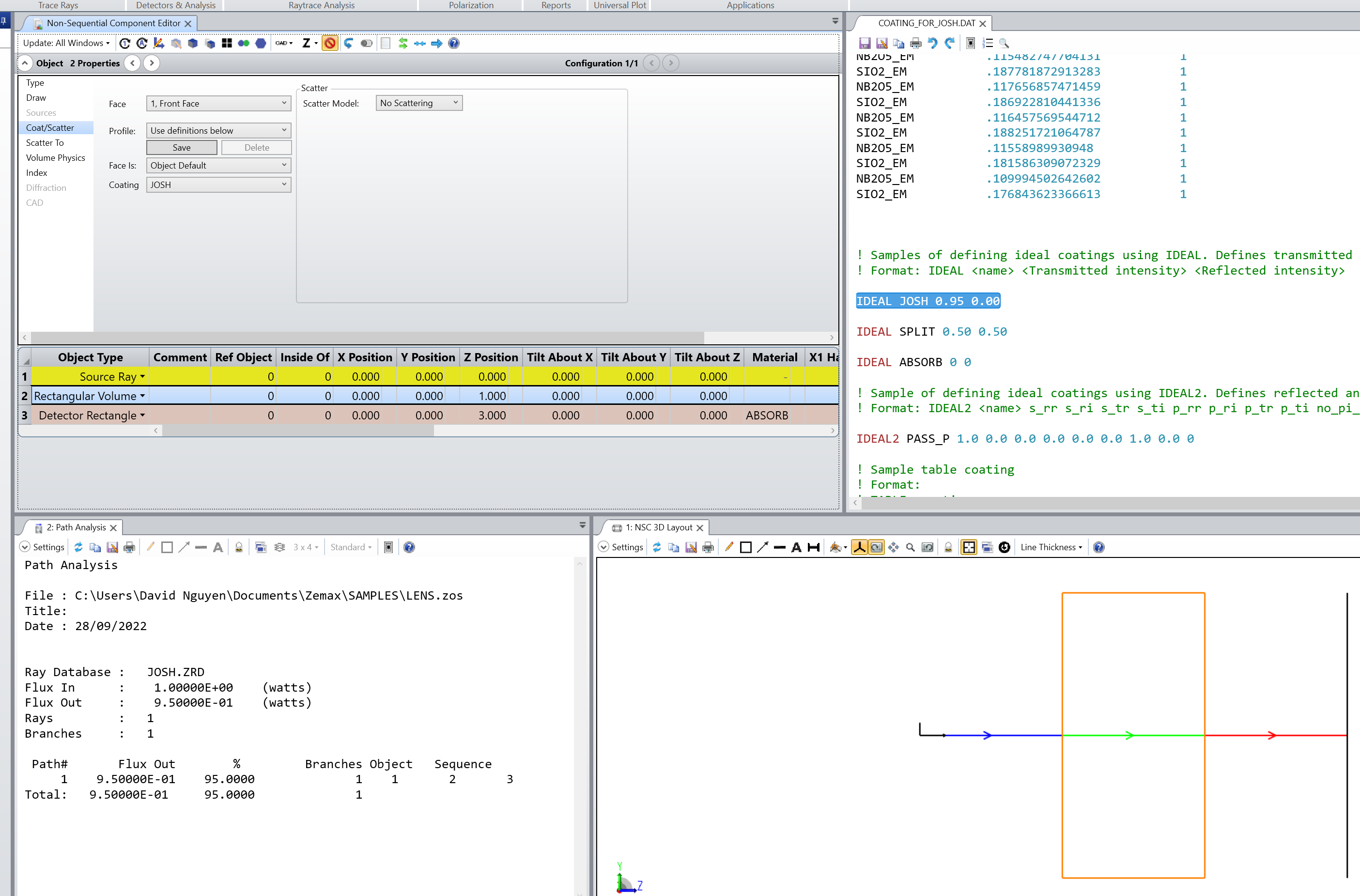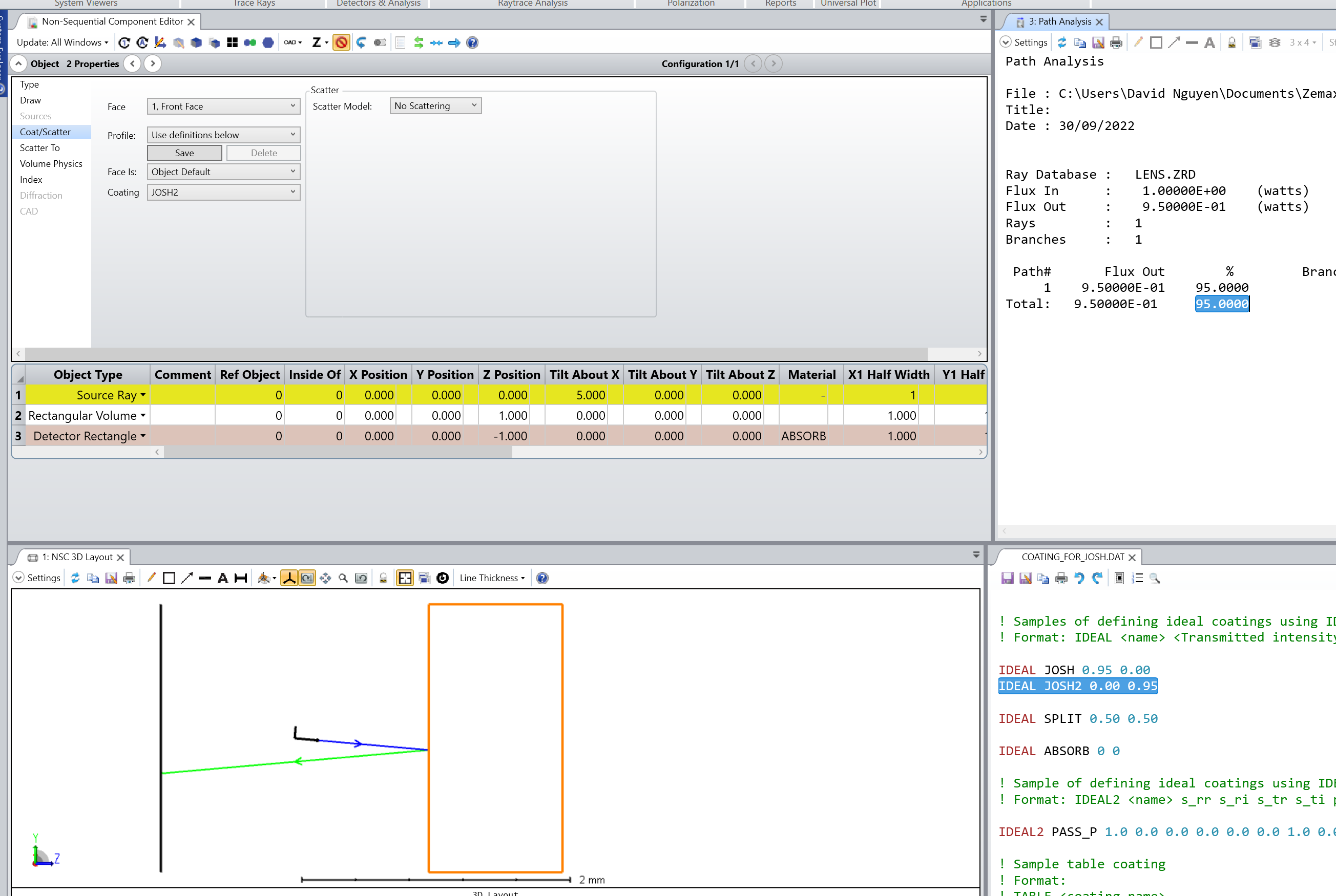Hi,
I’m using the Path Analysis feature (run from Matlab) to analyze how the light is going through a system. Path Analysis is a great feature!
What I’m noticing is that if I add up the number of rays in the path analysis rows, they equal to the number of rays in the ray trace / and in the layout. However, if I add up the powers in the rows, there is a total loss of about 1.8%. I currently do not have any coatings set on the various components (struggling to get that to work for some unknown reason or the other). Just mirror/reflector and absorbers.
Is there an atmospheric loss built into Zemax due to the air the light passes through? I tried setting the air pressure to zero in the System Explorer/Environment to try and simulate a vacuum, and it didn’t change anything. And, if there are air losses, I’d like to control them or set them to zero and calculate the losses numerically.
Thanks!







